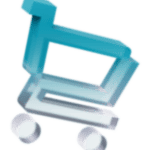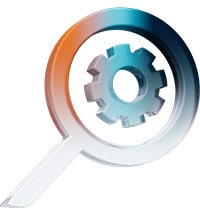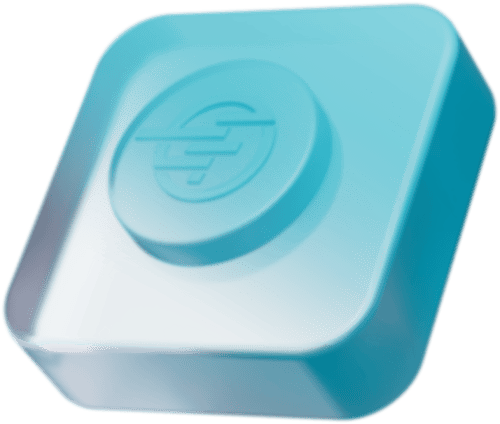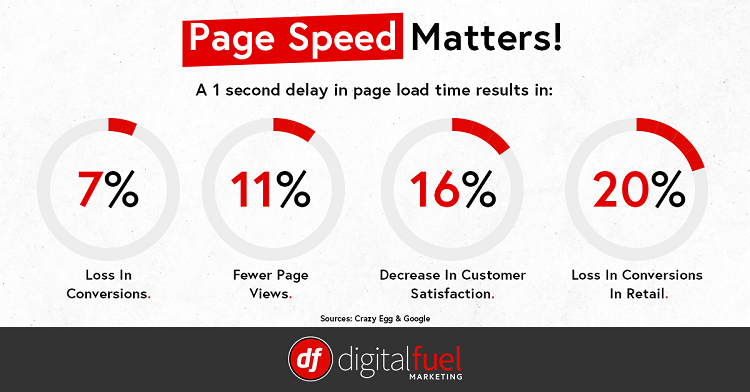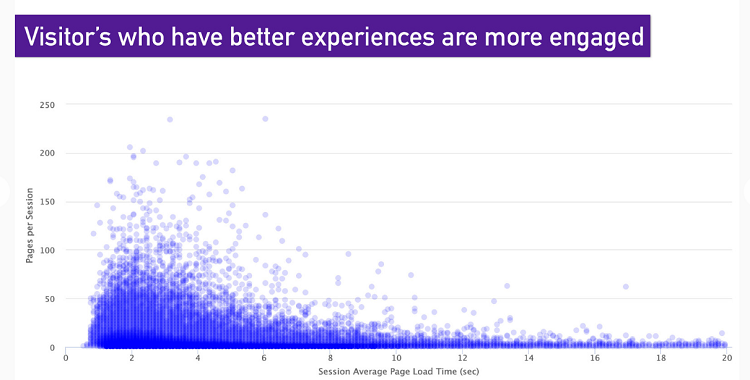Black Friday, Christmas, Sales, … It’s at the end of the year that your website usually generates the bulk of its sales. But how can you optimize your online conversion rates? Start by offering your customers an impeccable user experience on desktop and mobile! If you’re looking for tips and expert advice, here are the keys to preparing your website for peak traffic, so that your pages are always available and fast.
Optimizing website performance needs to be prepared well in advance of the big day
First and foremost: anticipation is key! Just as the results of SEO (Search Engine Optimization) work are not visible overnight on Google and other search engines, good loading times require long-term commitment (to help you, our experts offer tips for optimizing your speed in our monthly newsletter throughout the year).
Remember that speed is the number 1 UX requirement of Internet users, and as you can see from this image, the impact of a slow site is damaging to your marketing and business KPIs:
DigitalFuel Marketing study on the impact of 1s more loading time on conversions, page views and satisfaction
That’s why the loading time of your website’s pages must be an ongoing priority for both your marketing and technical teams. If you decide to go commando at the last minute, your site will never be ready in time, and you’ll have to regularly repeat the same work to optimize your web pages.
But how do you get your web pages to load quickly on desktop and mobile ?
There are many optimization techniques and best practices to consider, and you can even automate them: you need to reduce the weight of images, cache your content, optimize your resources and your Third Parties (we’ll come back to this later)…
A fast website doesn’t just make your customers more comfortable, it also takes the load off your servers and secures your sales. In fact, the lighter the pages and the more efficient the optimizations, the better your server will be able to handle traffic peaks to ensure your website’s availability.
Here’s a case in point: to save time and be always ready to face periods of high sales activity, King Jouet has chosento automate the optimization of its website page load times. As a result, the servers are relieved, and so are the teams. Thanks to fast pages (optimized images, clean code… on both mobile and desktop), the results were immediate: this e-tailer saw its conversion rates increase by 5%.
So, whether you have the resources in-house or are looking for an external service provider or SaaS solution to address this issue, you’ll understand that website page speed is essential. All your content is concerned: home page, product pages, category pages… as well as all your resources: JavaScript, HTML, CSS, images…
As “anticipation” is the key word for successful promotions, think about finalizing your website evolution projects well in advance of sales, Black Friday or Christmas.
Do you want to enhance the user experience with new functionalities? They need to be ready at least 1 month before the big event, otherwise you’ll find yourself at a loss when the time comes.
And what if load or performance tests don’t deliver satisfactory results? Don’t take any chances, postpone adding this feature!
Monitor and optimize Third Parties
94% of all websites contain third-party scripts. Yours certainly does. Advertising, tracking, dynamic or personalized content, chat, search engine, A/B tests… These Third Parties bring business value and improve the user experience, but beware: they can multiply by 2 to 3 the time it takes to access a functionality on a page. Be aware that the way you implement third parties has an impact on your performance.
So how do you go about it? In all cases, leave nothing to chance: list all third parties and be ready to deactivate them in the event of a problem. If a page isn’t available, your users won’t hesitate to go looking for their favorite product from your competitors (on mobile, 53% of visitors leave a site if a page takes more than 3 seconds to load, and don’t come back).
A few practical tips:
- make an inventory of your third-party applications
- organize them by priority
- identify the Third Parties you can do without, and deactivate them if necessary during promotional periods
- define the points of contact to contact in the event of a malfunction
- keep troubleshooting and maintenance guides from third-party publishers close at hand.
Then, if you were to open a ticket :
- identify the support contacts at the third-party publisher
- describe the problem precisely (context, URL, browser, mobile or desktop…)
- estimate the possible impact on your business results
- deploy a maintenance page.
Set up an overflow page
In your quest for performance, as we’ve seen, fast web pages take the load off your servers and better absorb traffic peaks.
Here’s a best practice that will help you get through promotional periods with peace of mind: the overflow pagesystem .
If your website runs into difficulties, whatever the reason, you can keep traffic under control and let your customers wait while you unclog your server or fix a malfunction, instead of losing sales.
Plan a research and testing phase to define the traffic threshold at which this overflow page is displayed. On this page, you can indicate to your users that they will have to wait a few moments before finalizing their purchase, and possibly offer to leave an e-mail to be notified as soon as the website is available again.
Here’s a case study from one of our customers: Trigano Store organizes private sales that can generate up to 20 times more traffic than normal. To avoid losing sales due to an unavailable site, this e-commerce site specializing in leisure equipment has automated load time optimization and automatically activates an overflow page in the event of a load peak. Customers are reassured that they will soon be able to confirm their purchase.
Organize your teams to manage promotions and plan for the unexpected
The period from autumn to the end of the year is crucial for e-tailers. You can expect the best, but you also need to be prepared for the worst. That’s why, during sales, Black Friday or Christmas, your teams need to be fully available, and well organized.
Plan on-call times to ensure that your website is available 24/7, and anticipate vacation periods so that there are no “holes in the system”. In the event of absence due to unforeseen circumstances, you must also have a back-up plan.
All teams and departments must be on deck: Operational and strategic marketing, e-commerce, IT, IT support, quality, supplier relations, etc.
UX, SEO and conversions: the benefits of a fast website over time
In conclusion, you need to prepare as early as possible to ensure that your sales operations are a success, and that the results are there for all to see.
One of the keys to success is a fast website, with optimized page load times that last! And, as we’ve seen, it’s a job that needs to be maintained over time if it’s to be effective.
In fact, the smoother the user experience, the more engaged your customers will be, and the more tempted they’ll be to return to your website. As you can see from this graph, the faster a website is, the greater the number of page views (source: Andy Davies):
Finally, in addition to engagement, page speed also helps to support your SEO actions for better search engine ranking (you may have heard of Google’s Core Web Vitals, KPIs that evaluate user experience from the angle of web page speed).
In short, there are only advantages to optimizing your loading times – and you can automate everything for greater convenience!
Find out more about the impact of loading times on your UX,
SEO and conversion rates?
